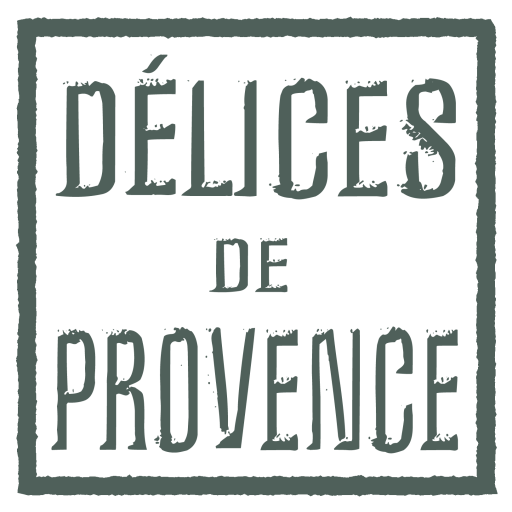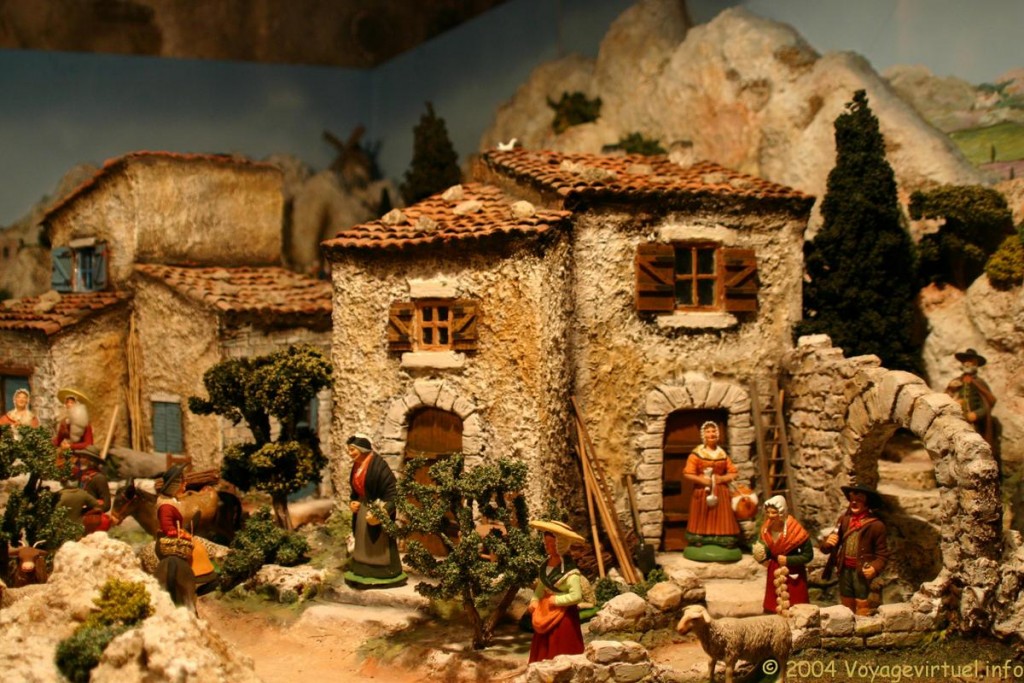Christmas just wouldn’t be Christmas in Provence without Santons. These hand-crafted terracotta figurines have been an integral part of yuletide festivities since Marseillais santonnier (santon maker) Lagnel produced his first figures during the French Revolution when churches were forcibly closed and their large nativity scenes prohibited. Lagnel crafted small figurines in plaster moulds and let them dry before firing them. There are two types of santons: santons d’argile (clay figures), and doll-like santons habillés (clothed figures).
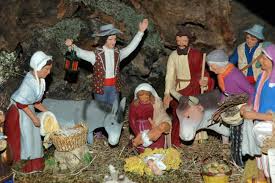 Santon means ‘Little Saint’ and were originally designed to be included in the annual nativity scenes in churches and homes throughout the region but over time they became more of a representation of the rich diversity and day to day life of the Provence people. These lovely collectable items feature all the different individuals who made up these villages, from tradesmen to farmers to shepherds and pedlars, each crafted with exquisite detail to make them as realistic and historically accurate as possible. Some scenes are huge and feature hundreds of santons displayed in a specially designed ‘set’. Many large churches throughout Provence create stunning crèches and open their doors to allow visitors to come and marvel.
Santon means ‘Little Saint’ and were originally designed to be included in the annual nativity scenes in churches and homes throughout the region but over time they became more of a representation of the rich diversity and day to day life of the Provence people. These lovely collectable items feature all the different individuals who made up these villages, from tradesmen to farmers to shepherds and pedlars, each crafted with exquisite detail to make them as realistic and historically accurate as possible. Some scenes are huge and feature hundreds of santons displayed in a specially designed ‘set’. Many large churches throughout Provence create stunning crèches and open their doors to allow visitors to come and marvel.
As well as all the usual figures we place in our nativity scenes there are many more characters which you may not be familiar with.
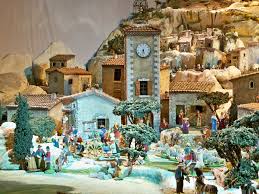
Baby Jesus: inspired by Christian culture, he is shown resting on a straw bed only covered by a bed sheet with a bare breast. The figure appears in the crib on Christmas Eve at midnight only.
Virgin Mary: She is shown kneeling down; hands joined wearing a pink tunic under a blue coat. She is traditionally always on the right of the New-Born.
Joseph: Dressed in white under a brown coat he stands on the left of the New-Born.
The Donkey: Shown lying down with his back turned to Jesus he is placed to the right of the New-Born.
The Ox: Always the same size as the donkey, he finds his place to the left of the New-Born warming him up with his breath.
The Shepherds: Wearing their coats and a shepherd’s hat they are shown either watching their herd leaning on their crook or lying in the grass. A young shepherd stands in front of the crib holding a lamb as an offering to Jesus. Essential figures of the crib, the shepherds are often placed near the stable because they are the first ones to have visit the New-Born.
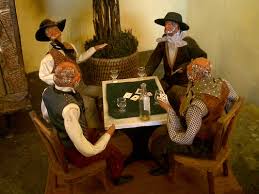
“Lou Ravi”: Wearing a nightcap, he is the village idiot. Arms raised and a blissful face, Lou Ravi is a prominent figure of the crib; used as a nickname ‘Lou Ravi’ refers to somebody who is just waking up or appears thunderstruck. It is said that he is the first one to be placed in the crib because he brings luck.
The Star: In the night it guided the shepherds as well as the other members of the crib including the Three Kings.
The “Boufareù” Angel: This is a small angel with puffed cheeks and spread wings. He is shown blowing into a golden trumpet to announce the good news to everybody. He is normally in a very visible part of the crib, either on the roof of the stable or hung in the sky.
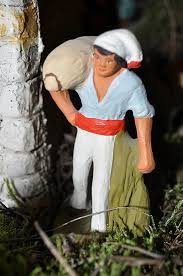
The Miller: He is either shown on his donkey carrying a bag of flour or just waking up.
The Drummer: He is shown drumming while walking, he sets the pace of the procession.
The Bohemian: Dark skinned and wearing a cloak, he is the tramp in search of a dirty trick.
The Blind Man and his Son: Guided by his son, the blind man walks to the pace of the drummer without being able to bemoan his other son he has just lost.
Pistachiet & Giget: Bringing offerings such as oil and cod; these two farmhands are meant to raise a laugh and come from the Maurel Pastoral play.
The Old People: There are three of them: the Jordan-Margarido couple, arm in arm but always quarrelling: Jordan is shown wearing a morning coat, an embroidered waistcoat and holding a lantern, Margarido is wearing lace and a flowery shawl and carries a wicker basket. They are escorted by their friend Roustido whose refined outfit reflects his social standing of former notary of the village. He often carries a large red umbrella.
The Fishermen: Shown seated holding their fishing rods, nets and fishing baskets.
The Basket Makers: Shown with a large wicker basket which will be used as a cradle for the New Born. This is a reminder of the importance of this trade during the 18th and 19th century in Provence.

The Water Carriers: They are shown in the crib with a bucket or jar filled with water as a reminder of the scarcity of water during the past centuries.
The Wise Men: Melchior, Gaspard and Balthazar are shown in the crib at Epiphany only when they bring their offerings to the New Born – Gold, Frankincense and Myrrh.
The Villagers: This non-exhaustive category of people represents the rural trades such as the baker, the farmer, the washer woman, the water bearer and so on but also city dwellers such as the fishmonger, the porter, the flower seller, the tinker, the grinder, etc. Finally one will find the lower earners such as the hunter, the angler, the chimney sweep, the ragman, the snail seller, the blind and the child, the gypsies, the tramp, etc. And many other trades of bygone days…
All these santons are displayed in the crib around such structures as the stable, the bridge, the well, the wind-mill, a grotto or a Provencal cottage. To bring more life to the crib it is common to add moss as grass, sprigs of thyme and rosemary as well as twigs of cypress in way of trees. Families will move the figures around during Advent and Epiphany to illustrate the progress of the story, inching the Holy Family and the Three Kings towards the stable.
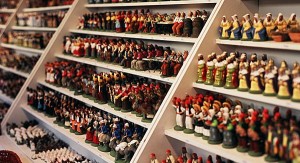
Since 1803, santonniers have gathered in Marseille each December to display and sell their wares at the Foire des Santonniers. Aubagne Santon Fair in Marseille holds a two-day fair, Biennale de l’Art Santonnier, and the Musée du Santon in Marseille exhibits a private collection of 18th and 19th century santons.
Have you bought any Santons from Provence? Do you stage your own crèche at home each Christmas?

